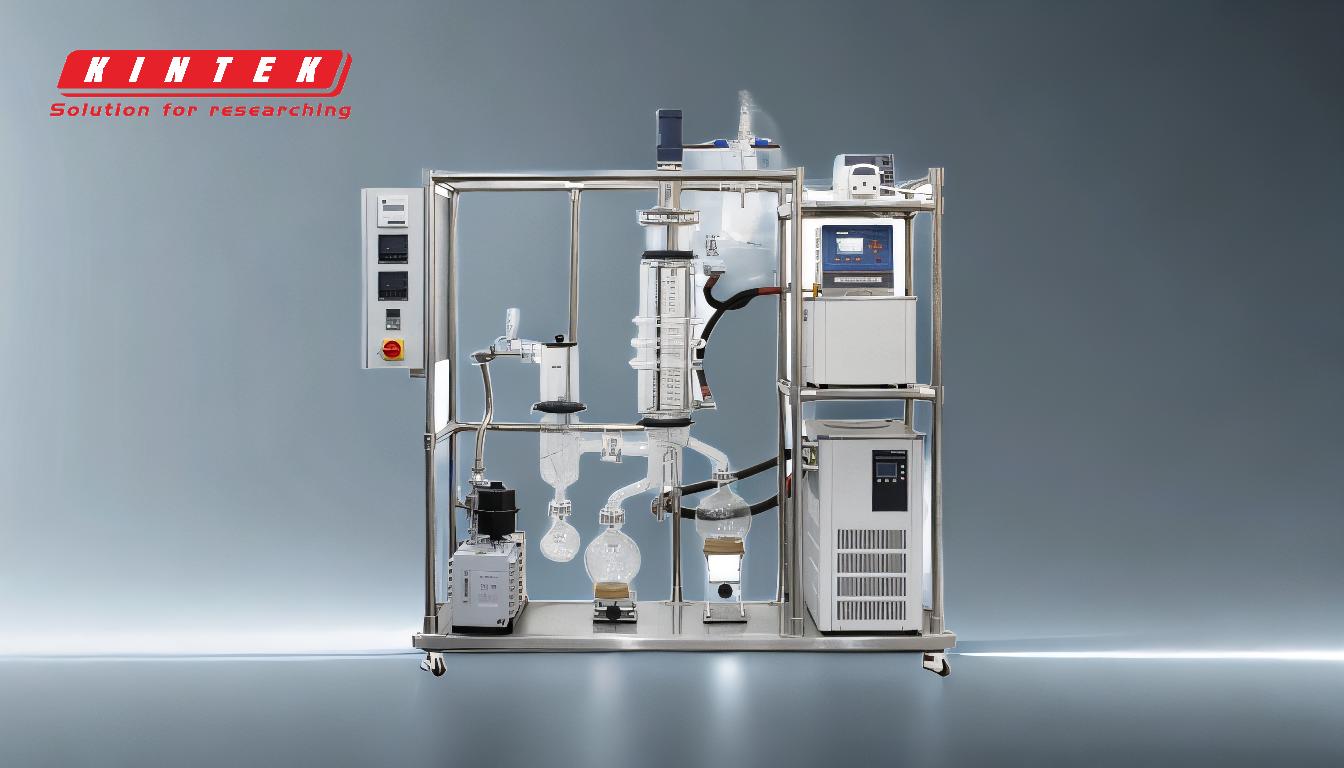Vacuum distillation is a process used to separate liquids with high boiling points or those that decompose at high temperatures. By reducing the pressure, the boiling points of these liquids are lowered, allowing them to evaporate at much lower temperatures. This method is particularly useful for preserving the quality and purity of heat-sensitive compounds. The process involves heating the liquid mixture, evaporating the components under reduced pressure, condensing the vapors, and collecting the distillate. It is often combined with other distillation techniques like fractional or steam distillation for better separation of complex mixtures.
Key Points Explained:

-
What is Vacuum Distillation?
- Vacuum distillation is a separation technique used for liquids with high boiling points or those that decompose at high temperatures. It operates under reduced pressure, which lowers the boiling points of the components in the mixture.
- Unlike atmospheric distillation, which operates at normal atmospheric pressure, vacuum distillation allows for the separation of compounds at much lower temperatures, preserving their integrity.
-
How Does Vacuum Distillation Work?
- Pressure Reduction: The pressure inside the distillation apparatus is reduced below atmospheric pressure. This reduction in pressure lowers the boiling points of the liquids in the mixture.
- Evaporation: As the pressure decreases, the liquids begin to boil at lower temperatures. When the vapor pressure of a component equals the surrounding pressure, it vaporizes.
- Condensation: The vaporized components are then condensed back into liquid form by cooling.
- Collection: The condensed liquid, now separated from the original mixture, is collected as the distillate.
-
Why Use Vacuum Distillation?
- High Boiling Points: It is ideal for separating compounds with high boiling points (above 392°F or 200°C) that would otherwise require extremely high temperatures to boil.
- Heat-Sensitive Compounds: Many compounds decompose or degrade when exposed to high temperatures. Vacuum distillation allows these compounds to be separated without thermal degradation.
- Purity: The process can yield high-purity samples of compounds, making it valuable in industries like pharmaceuticals, essential oils, and petrochemicals.
-
Applications of Vacuum Distillation:
- Petroleum Refining: Used to separate heavy crude oil fractions without cracking or decomposing them.
- Essential Oils: Preserves the delicate aromas and therapeutic properties of essential oils by distilling them at lower temperatures.
- Pharmaceuticals: Used to purify heat-sensitive drugs and chemicals.
- Food Industry: Extracts flavors and fragrances without altering their natural qualities.
-
Advantages of Vacuum Distillation:
- Lower Operating Temperatures: Reduces the risk of thermal degradation of sensitive compounds.
- Energy Efficiency: Lower temperatures mean less energy is required to achieve boiling.
- High Purity: Produces high-purity distillates, which are crucial in many industries.
- Versatility: Can be combined with other distillation methods like fractional or steam distillation for more complex separations.
-
Key Considerations:
- Equipment: Specialized equipment is required to maintain the vacuum and handle the lower boiling temperatures.
- Safety: Operating under reduced pressure requires careful monitoring to prevent leaks or pressure fluctuations.
- Cost: The initial setup and maintenance of vacuum distillation equipment can be more expensive than atmospheric distillation.
-
Example of Vacuum Distillation:
- Water Distillation: At sea-level atmospheric pressure (1000 mbar), water boils at 100°C. However, at a reduced pressure of 45 mbar, water can boil at much lower temperatures, allowing for a gentle and efficient distillation process.
-
Combination with Other Techniques:
- Steam Distillation: Often combined with vacuum distillation to separate aromatic compounds more effectively.
- Fractional Distillation: Used alongside vacuum distillation to separate complex mixtures with components that have close boiling points.
In summary, vacuum distillation is a powerful and versatile technique for separating and purifying liquids that are sensitive to high temperatures or have high boiling points. By reducing the pressure, it allows for efficient separation at lower temperatures, preserving the quality and integrity of the compounds involved.
Summary Table:
| Aspect | Description |
|---|---|
| What is it? | A separation technique for liquids with high boiling points or those that decompose at high temps. |
| How it works | Reduces pressure to lower boiling points, evaporates, condenses, and collects distillate. |
| Why use it? | Ideal for high-boiling-point compounds and heat-sensitive materials, ensuring high purity. |
| Applications | Petroleum refining, essential oils, pharmaceuticals, and food industry. |
| Advantages | Lower operating temps, energy efficiency, high purity, and versatility. |
| Key Considerations | Requires specialized equipment, safety monitoring, and higher initial costs. |
Discover how vacuum distillation can optimize your processes—contact our experts today!












